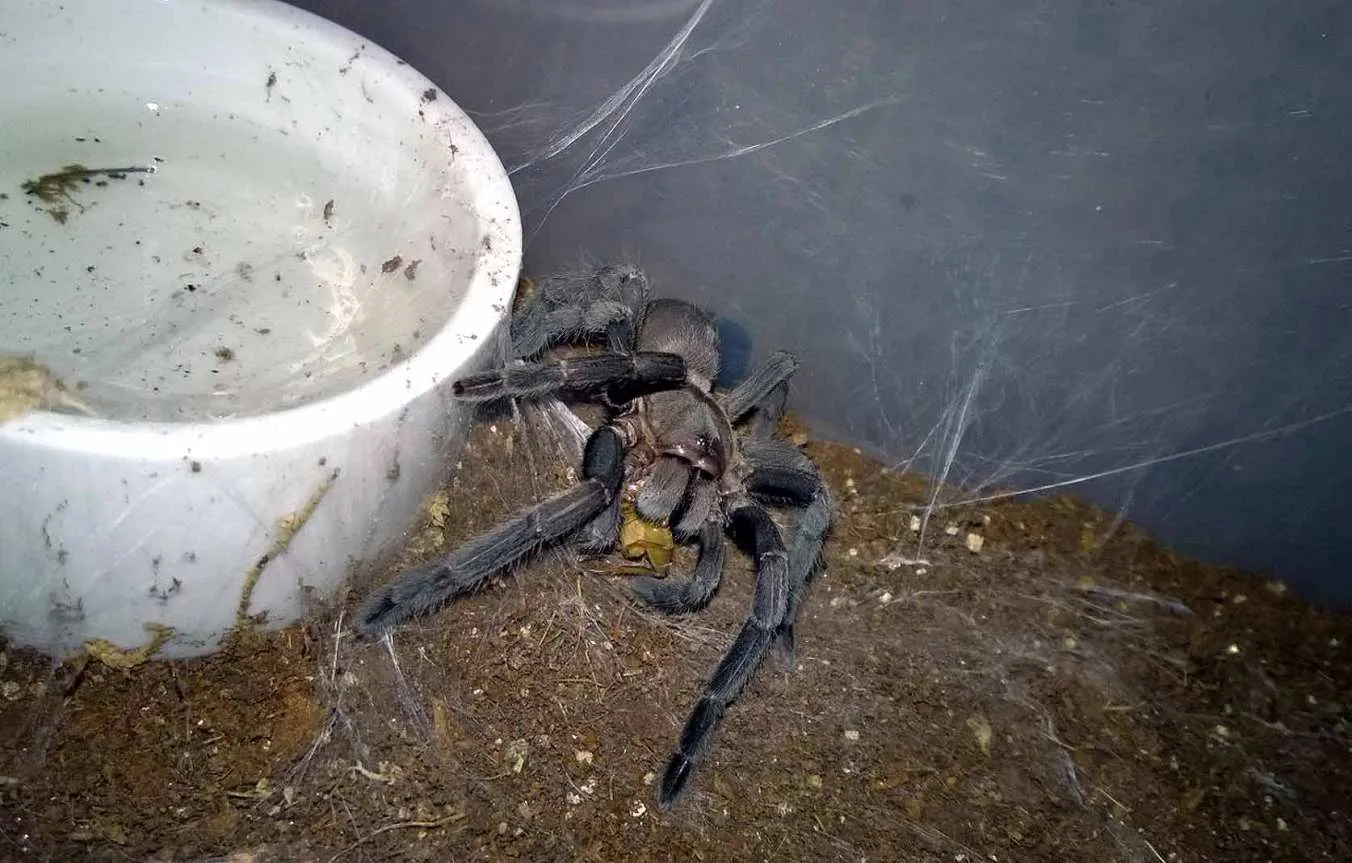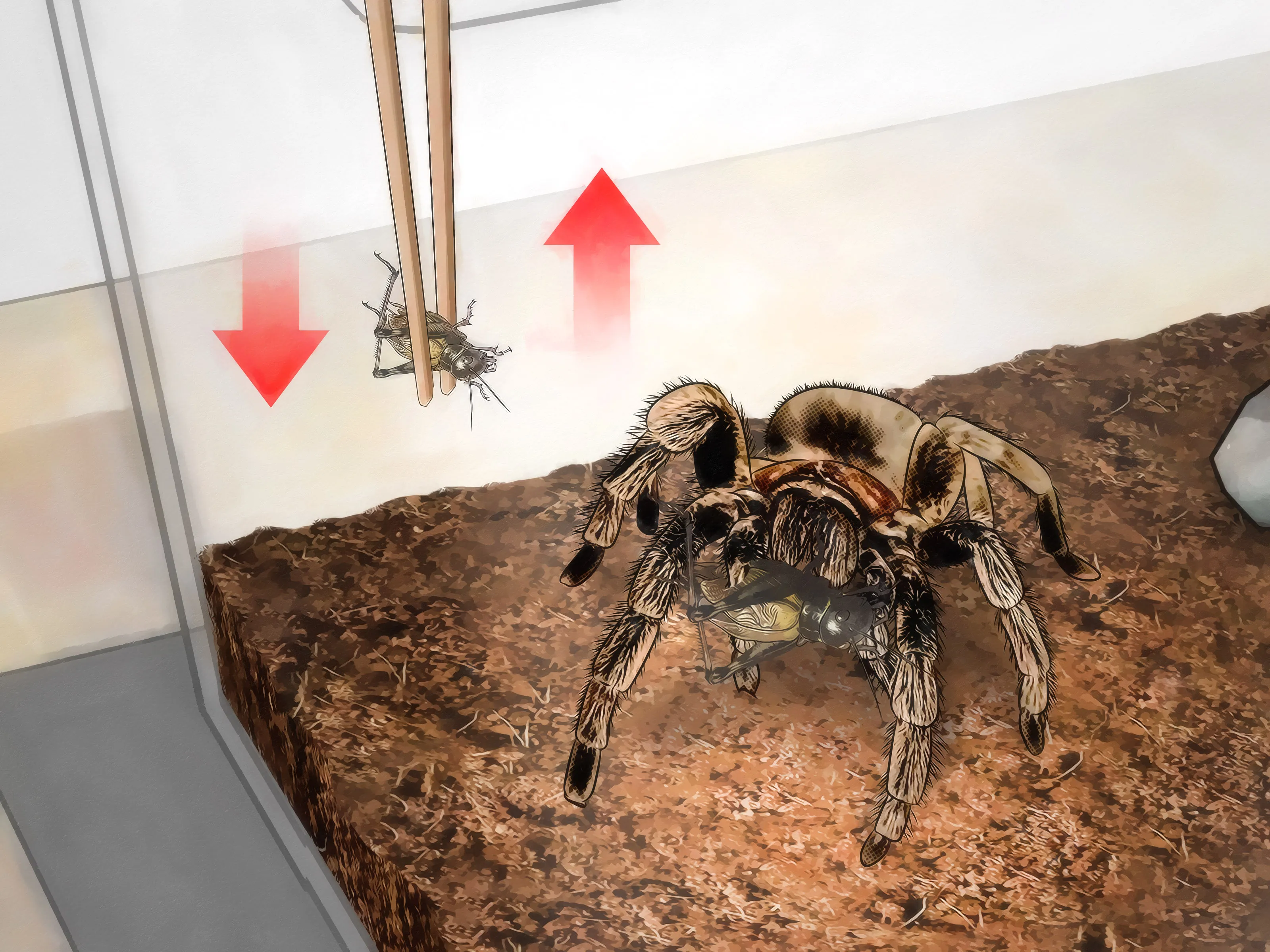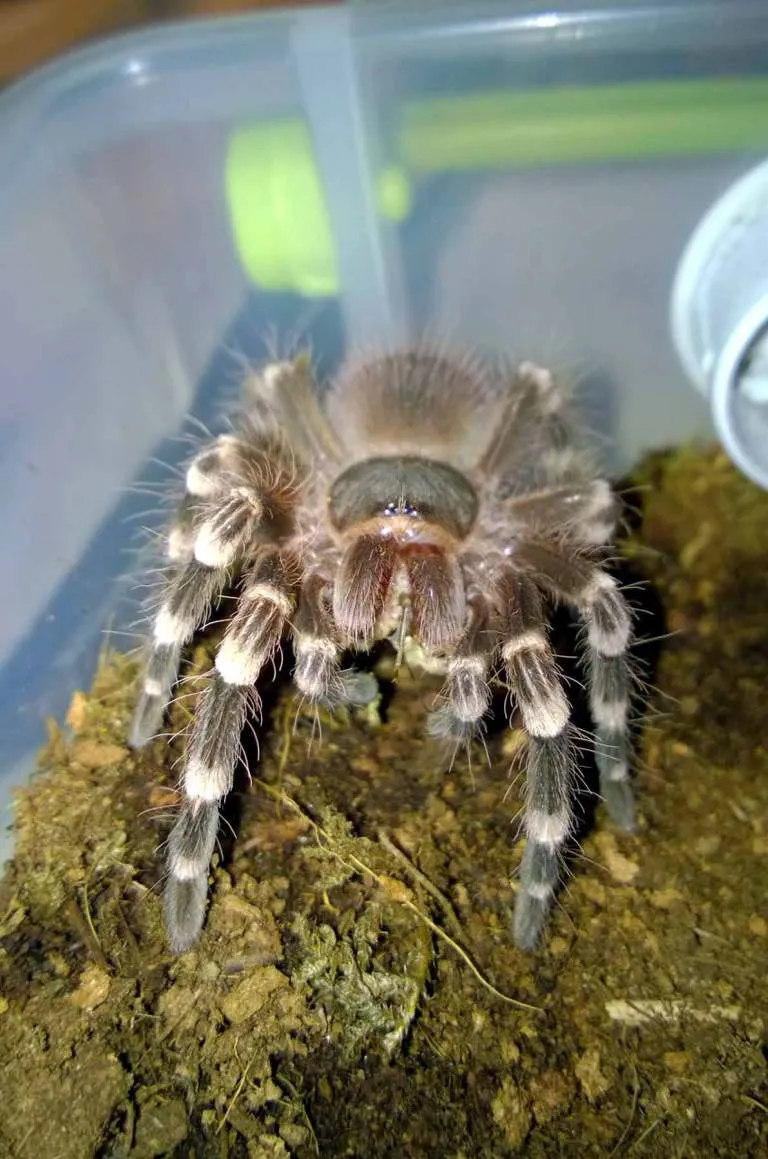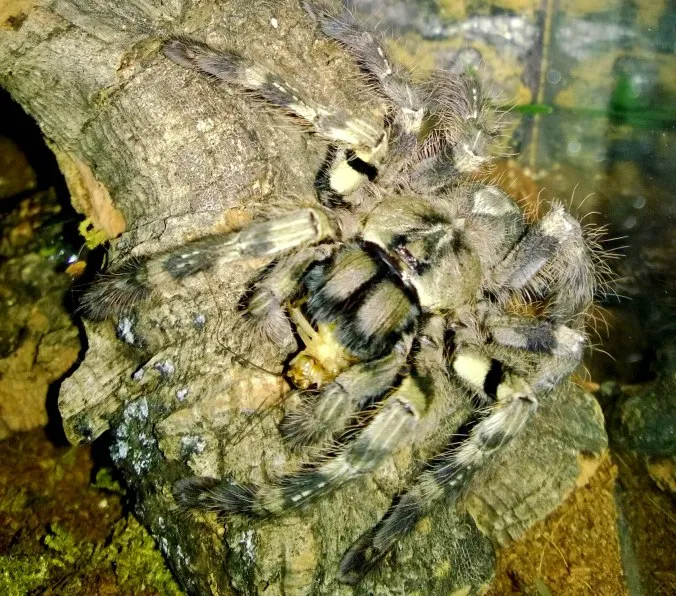Understanding Tarantula Dietary Needs
Caring for a tarantula involves understanding its specific dietary needs, which are crucial for its health, growth, and overall well-being. Tarantulas, being obligate carnivores, require a diet consisting primarily of live insects. This article delves into the essential aspects of tarantula feeding, from choosing the right prey to establishing a feeding schedule and avoiding common pitfalls. Proper feeding practices ensure that your tarantula thrives in captivity, exhibiting vibrant colors and healthy behaviors. Knowledge of their dietary needs is a cornerstone of responsible tarantula ownership, contributing significantly to the animal’s longevity and happiness.
What Do Tarantulas Eat
Insects as a Staple Food

Insects form the primary diet of tarantulas in the wild, and this should be replicated in captivity. The most common insects used for feeding include crickets, mealworms, and roaches. These insects are relatively easy to acquire and maintain, making them ideal food sources. The nutritional value of these insects can vary, which is why a varied diet is beneficial. Different species of tarantulas have different preferences, but most will readily consume a variety of insects. Ensuring a constant supply of appropriately sized insects is vital for maintaining the tarantula’s health and promoting growth.
Consideration of Insect Size
The size of the prey is a critical factor in feeding tarantulas. The general rule is to offer insects that are no larger than the tarantula’s body. If the prey is too large, the tarantula may be intimidated and refuse to eat. Conversely, providing prey that is too small may not provide enough sustenance. Adjust the size of the prey as your tarantula grows. Young spiderlings should be fed small, flightless fruit flies or pinhead crickets, while larger tarantulas can consume larger insects like adult crickets or even small mice. This ensures that the tarantula can successfully hunt and consume its food without unnecessary stress.
Prey Selection for Nutritional Value
While crickets and mealworms are common, it’s important to diversify the prey to provide a range of nutrients. Dubia roaches, for instance, are known for their high protein content and are relatively easy to keep. Before feeding, gut-load the insects with nutritious food, such as fruits, vegetables, and commercial insect feed. This process enriches the nutritional value of the prey, thereby benefiting the tarantula. The nutritional content of the prey directly affects the tarantula’s health, molting process, and overall vitality. Providing a varied diet contributes to a healthier and more vibrant tarantula, and it’s important to gut load the insects with nutritious food.
Supplementing the Diet with Other Foods

Vitamin and Mineral Supplements
While a varied diet of insects is sufficient, some keepers opt to supplement their tarantula’s diet with vitamins and minerals. This is especially beneficial for tarantulas in the juvenile stages. Calcium and vitamin D3 are particularly important for promoting healthy exoskeletons and molting. These supplements can be dusted onto the insects before feeding. Be cautious not to over-supplement, as excessive vitamins can be harmful. Always follow the recommendations of the supplement manufacturer and monitor your tarantula’s response to the supplements. An occasional dusting of vitamins can help ensure your tarantula receives all the nutrients needed.
Occasional Feeding of Other Prey
In addition to insects, some tarantula keepers occasionally offer other prey items such as small, pre-killed mice or small lizards, especially to larger tarantulas. These can be a good source of additional nutrients and can help to vary the tarantula’s diet. However, it is crucial to offer such prey items sparingly. Pre-killed prey is always recommended to avoid injury to your tarantula. Always supervise the feeding process and remove any uneaten prey within a reasonable timeframe. These prey items should not be a regular part of the diet but can be a beneficial supplement in moderation.
Proper Feeding Techniques

Frequency of Feeding
The frequency of feeding depends on the tarantula’s age and species. Spiderlings and juvenile tarantulas typically require more frequent feeding, often every other day or every three days. Adult tarantulas, on the other hand, can be fed less frequently, typically once or twice a week. Adjust the feeding schedule based on the tarantula’s appetite and activity level. If the tarantula readily eats, continue with the current schedule. If it refuses food, reduce the frequency. Observe your tarantula’s behavior. Overfeeding can be detrimental, so it’s essential to strike a balance that promotes healthy growth without causing obesity or stress.
Feeding Schedule for Different Life Stages
Spiderlings need more frequent feeding to support rapid growth. Feed them small, flightless fruit flies or pinhead crickets every other day or every three days. Juveniles should be fed slightly larger insects, such as small crickets or mealworms, a couple of times a week. Adult tarantulas can be fed once or twice a week, or even less frequently if they are well-fed. The feeding frequency should decrease as the tarantula approaches a molt, as they may lose their appetite. Always consider the tarantula’s individual needs and adjust the feeding schedule accordingly. Monitor the tarantula’s abdomen size and behavior as indicators.
How to Offer Food

There are several methods to offer food to your tarantula. The simplest method is to drop the live insect into the enclosure. However, this method carries the risk of the insect hiding and causing stress. Another method is to use tongs to offer the prey. This allows for better control and reduces the chances of the insect escaping. Remove any uneaten prey within 24 hours. The choice of method depends on the size and temperament of your tarantula. The goal is to make feeding as stress-free as possible for both the keeper and the tarantula. This helps maintain a harmonious environment.
Live Prey Delivery Methods
The most common method is simply dropping the live prey into the enclosure. This method works well for most tarantulas, especially those that are active hunters. Another option is using tongs. Tongs offer more control and allow you to position the prey directly in front of the tarantula. This can be particularly helpful for tarantulas that are less active or those that are picky eaters. The method you choose will depend on the size, temperament, and feeding habits of your specific tarantula species. Whatever method you choose, make sure to observe your tarantula’s feeding behavior and ensure it’s eating properly.
Removing Uneaten Food
It is crucial to remove any uneaten prey within 24 hours. Leaving live insects in the enclosure can stress the tarantula, and the insects may even attack the tarantula, especially during a molt. Uneaten prey also contribute to the buildup of waste and can attract unwanted pests. Monitor the enclosure regularly and remove any uneaten insects promptly. Use tongs or a small net to remove the prey, being careful not to disturb the tarantula. This practice helps maintain a clean and healthy environment, reducing the risk of health issues and promoting the tarantula’s well-being. Regular removal of uneaten food is a vital part of responsible tarantula care.
Maintaining Optimal Hydration

Importance of Fresh Water
Water is essential for tarantulas, just as it is for all living creatures. Providing a constant supply of fresh, clean water is crucial for hydration and overall health. Tarantulas drink by lapping up water, so a water source is essential. Without adequate hydration, tarantulas can become dehydrated, leading to health problems. Dehydration can also impede the molting process and negatively affect the tarantula’s activity levels. Proper hydration ensures the tarantula functions optimally and remains healthy. Keep the water source clean, and replenish it regularly with fresh water.
Water Bowl Requirements
A shallow water bowl is the most common way to provide water. The bowl should be shallow enough to prevent the tarantula from drowning, especially for spiderlings. The size of the water bowl should be appropriate for the size of the tarantula; the larger the tarantula, the larger the bowl. Ceramic or plastic water bowls are suitable, as they are easy to clean and relatively stable. Ensure the water bowl is always clean and free from debris. Regular cleaning and refilling of the water bowl are essential to prevent the growth of bacteria and maintain water quality, contributing to a healthier environment for your tarantula.
Misting for Humidity
In addition to a water bowl, misting can help maintain the appropriate humidity levels for some tarantula species. Humidity is crucial for molting and overall health, especially for species that originate from humid environments. Misting helps to provide a moist environment, which is essential during the molting process. However, it is important not to over-mist, as excessive humidity can lead to mold and other health issues. Monitor the humidity levels in the enclosure and adjust the misting frequency accordingly. Misting can be beneficial for some species, but always consider the specific needs of your tarantula.
Misting Frequency and Technique
The frequency of misting depends on the tarantula species and the humidity needs. Generally, misting once or twice a week is sufficient for most species. Using a spray bottle, lightly mist the substrate and the sides of the enclosure, avoiding direct spraying of the tarantula. Over-misting can lead to the substrate becoming waterlogged, which can promote mold and bacteria growth, and potentially harm the tarantula. Monitor the humidity levels in the enclosure using a hygrometer and adjust the misting frequency as needed. Aim for the appropriate humidity levels for your tarantula’s specific needs, which will ensure the best health and molting.
Common Feeding Mistakes and Solutions
Overfeeding and Its Consequences
Overfeeding is a common mistake among tarantula keepers. Feeding too frequently or offering prey that is too large can lead to several health issues. Obese tarantulas may have difficulty molting, have a shorter lifespan, and become less active. Overfeeding can also stress the tarantula, and may cause the tarantula to become less interested in food. The best way to avoid overfeeding is to observe the tarantula’s body condition and adjust the feeding schedule accordingly. Be mindful of the amount and frequency of food offered and remember that tarantulas can go for extended periods without eating.
Identifying Signs of Overfeeding
Signs of overfeeding can include a plump abdomen and a lack of interest in food. The abdomen should not be significantly larger than the carapace (the top shell). If the abdomen is excessively large or distended, reduce the feeding frequency. Watch for uneaten food, as this can also be a sign that the tarantula is not hungry. Overfed tarantulas may also become less active, spending more time in their hide. If you observe these signs, adjust the feeding schedule immediately and ensure the tarantula remains healthy. Maintaining a balanced diet is important for preventing health problems.
Dealing with a Refusing Tarantula
Sometimes, tarantulas may refuse to eat. This can be a common concern among tarantula owners, and there are several potential reasons behind this behavior. It’s important to understand the reasons why a tarantula may refuse food and how to address these situations. A tarantula might refuse food if it is close to molting, stressed, or if the enclosure conditions are not ideal. Knowing the causes of food refusal can help in taking the necessary steps to get the tarantula to eat again. Monitor the tarantula’s behavior and surroundings, and adjust the care to ensure its well-being.
Potential Reasons for Refusal
The reasons for food refusal vary. A tarantula approaching a molt may stop eating several weeks beforehand. Stress due to improper enclosure conditions, frequent handling, or a lack of hiding places can also contribute. Environmental factors, such as incorrect temperature or humidity levels, can also cause a tarantula to lose its appetite. Another possible cause is illness, or a recent feeding. A tarantula may also refuse food if it has eaten recently. Always consider the tarantula’s environmental factors and behavior to determine the reasons for refusal. Careful observation will help in identifying the specific issues causing the food refusal.
Solutions for a Picky Eater
If a tarantula refuses food, start by checking the enclosure conditions. Ensure the temperature and humidity are within the appropriate range for the species. Provide a secure hiding place to reduce stress. Offer different types of prey, as the tarantula might simply be bored with its current diet. Ensure fresh water is available at all times. If the tarantula continues to refuse food, monitor the situation and be patient. In most cases, tarantulas will start eating again once the underlying issue is resolved. If food refusal persists for an extended period, consult with an experienced tarantula keeper or a veterinarian experienced with exotic animals.
Creating a Suitable Habitat
The habitat plays a crucial role in a tarantula’s health and feeding behavior. A well-designed enclosure ensures that the tarantula feels safe, secure, and can thrive. The size of the enclosure, the type of substrate, and the presence of hides and decorations all contribute to the overall well-being of the tarantula. A suitable habitat provides a proper environment for the tarantula to eat, molt, and engage in natural behaviors. A well-maintained habitat reduces stress and promotes healthy living conditions. Creating the proper environment is a crucial step in successful tarantula care.
Selecting the Right Enclosure
The size and type of enclosure are important considerations. The enclosure should be large enough for the tarantula to move around comfortably but not so large that the tarantula feels exposed and stressed. The enclosure should be tall enough to provide adequate vertical space, especially for arboreal species. Ensure the enclosure has secure ventilation to prevent mold growth and maintain proper air circulation. Clear, transparent enclosures are best for easy viewing. Ensure the enclosure is escape-proof, and the lid should fit snugly. Proper enclosure selection contributes to the tarantula’s comfort and reduces stress.
Ventilation and Space Requirements
Ventilation is essential in a tarantula enclosure to prevent the buildup of humidity and maintain proper air circulation. Ensure the enclosure has ventilation holes or mesh on the sides and top. The enclosure size should also be adequate for the species. As a general rule, the enclosure should be at least twice the tarantula’s leg span in width and length. Provide enough space for the tarantula to move around and explore, and consider its natural behaviors. The size of the enclosure and the ventilation are important to regulate humidity and provide an enriching environment for the tarantula.
Substrate and Decoration
The substrate is the bedding material used in the enclosure. The best substrate for most tarantulas is a mixture of peat moss, vermiculite, and coconut fiber. This mixture retains moisture, allows for burrowing, and provides a comfortable environment. Avoid using substrates that are toxic or can cause injury to the tarantula, like gravel or wood shavings. Add decorations such as cork bark, artificial plants, and branches to enrich the environment and provide hiding places. Proper substrate and decoration will make the tarantula feel safe, encourage natural behaviors, and contribute to the overall well-being.
Choosing the Right Substrate
The choice of substrate is important for tarantula care. The substrate should retain moisture, be safe for burrowing, and provide a natural environment. Peat moss, vermiculite, and coconut fiber are all excellent choices because they can retain moisture, which is vital for humidity. Avoid using substrates that can be toxic or cause injury, such as gravel, cedar shavings, or sand. The substrate should also be deep enough for burrowing species to create a safe haven. The depth of the substrate will depend on the species, but it’s best to provide enough to allow the tarantula to burrow or feel secure.
Adding Hides and Enrichment
Tarantulas are often shy and like to have a place to retreat. Adding hides, such as cork bark, artificial plants, or half-logs, is crucial for their well-being. Hides provide a sense of security, reducing stress and encouraging natural behaviors. In addition to hides, consider adding other enrichment items such as artificial plants, branches, and rocks to the enclosure. These items provide a more stimulating environment and can help the tarantula feel more comfortable. Enriching the environment will enhance the overall quality of life and encourage the tarantula to exhibit natural behaviors.
